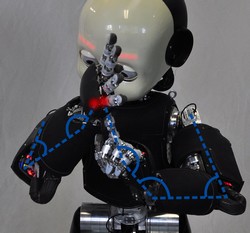Robots and body awareness
Unlike factory robots, humans are able to flexibly operate in almost any spatial context. Yet, the neurological mechanisms behind body representations and awareness are largely unknown. Modelling of such processes develops understanding of the biological mechanisms, while also helping in the design of equivalent processes in robots. The EU-funded ICUB BODY SCHEMA (Body schema learning and adaptation in the iCub humanoid robot using whole-body tactile information) project performed the relevant modelling and developed appropriate technology. The research abstracted general principles obtained from human studies to the iCub human-like robot. The robot has been recently equipped with whole-body tactile sensors. The study helped to test hypotheses and to develop robots with greater resilience and autonomy. The team developed a set of models for the robot that simulated mechanisms involved in learning, adaptation and spatial body sense. Researchers clarified and refined concepts invented to describe body representation. Individual case studies helped to address development of tactile and spatial representations. Project staff established collaborative relationships with American and French developmental psychologists. Work related to computational models showing how body exploration and self-touch experience facilitates body models of learning. Researchers also designed novel robot controllers able to perform with human-like reliability and adaptability. Whole-body tactile sensing allowed the robot to automatically model its body through self-touching. The same technology allowed the robot to safely move in unknown, cluttered environments using a kind of body awareness. The outcome relied upon project case studies concerning autonomous spatial learning and representation of near-body surroundings. Further work addressed controllers for whole-body avoidance mechanisms triggered by visual or tactile stimuli, and processes for planning movements with regard to safety margins. The work could find application in factory markets. Robots may become more adaptable, without the costs of extensive reprogramming. Project outcomes will help robots transition from conventional industrial settings to working in cluttered and changeable human homes. Additionally, the modelling work may help in the treatment of amputees or those suffering from neurological disorders.







